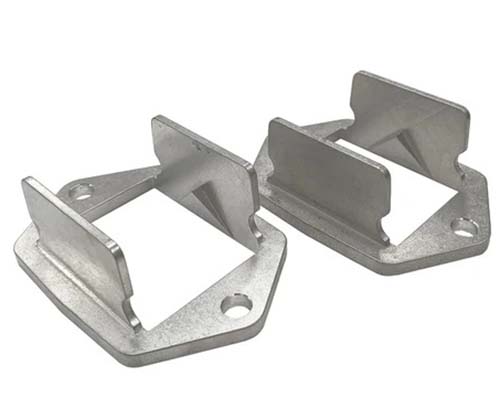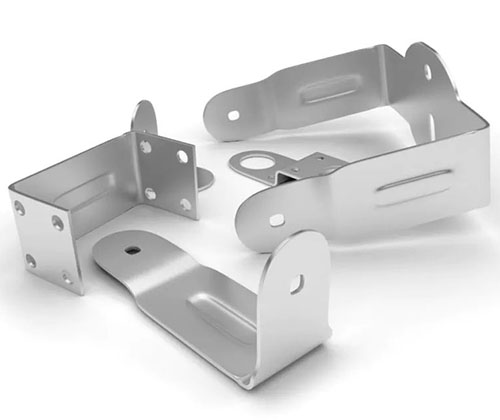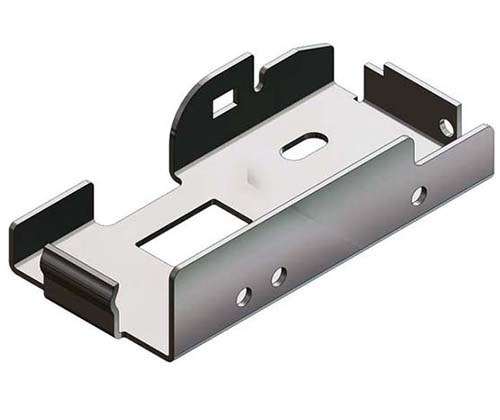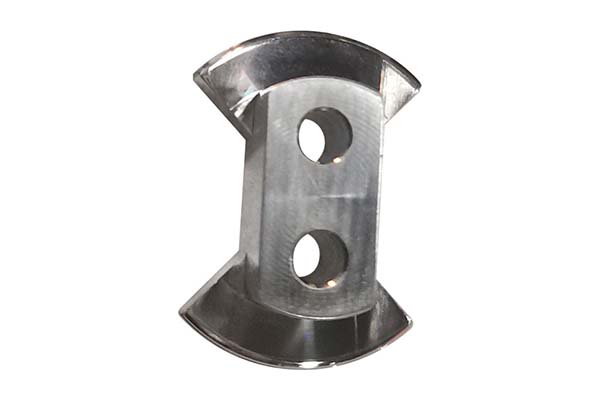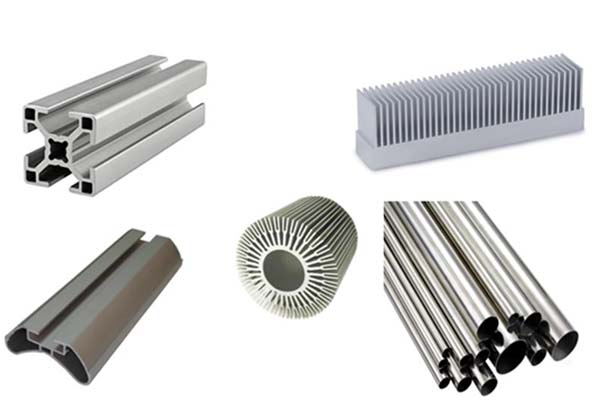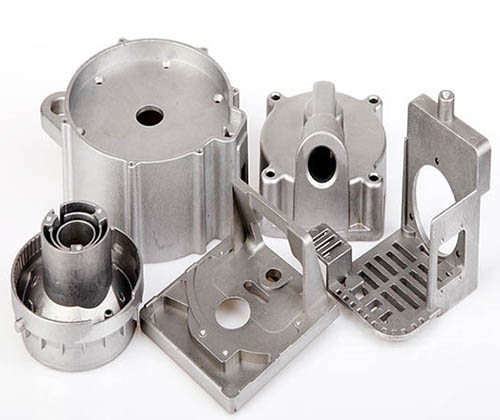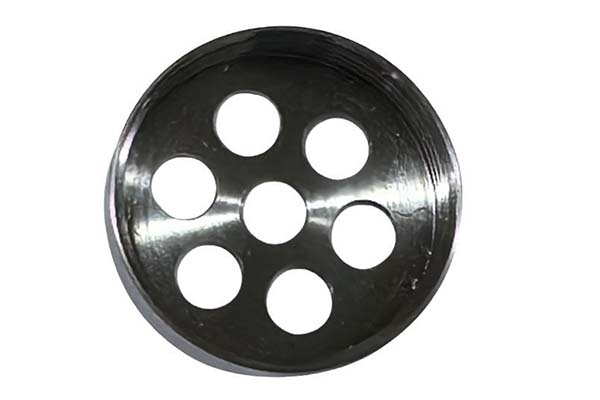You’ve chosen AM60B magnesium alloy for its reputation as a ductile, impact-resistant material, expecting parts that can absorb energy without breaking—ideal for automotive parts like door beams and bumpers. But your production is facing issues: the molten metal doesn’t flow as smoothly as AZ91D, leaving thin sections of engine components incomplete. Some castings have lower tensile strength than expected, failing under moderate loads, while others crack during ejection due to brittleness. Maybe the die requires frequent maintenance due to sticking, or the cycle time is longer than projected, cutting into efficiency. Worse, your “high-elongation” parts don’t bend as expected in impact tests, undermining AM60B’s promise of ductility.
AM60B is a specialized magnesium alloy prized for its exceptional ductility and corrosion resistance. Its unique alloying elements (aluminum and manganese) deliver a microstructure that combines strength with the ability to absorb impact—making it ideal for parts that need to bend rather than break. But unlocking its potential requires mastering the die casting process, from inert gas protection to cooling rates. In this guide, we’ll explore die casting AM60B, helping you leverage its unique properties to create impact-resistant, lightweight parts for safety-critical applications.
Material Properties: The Unique Strengths of AM60B
AM60B’s appeal lies in its specialized material properties—a blend of ductility, strength, and corrosion resistance that makes it stand out among magnesium alloys:
- Mechanical performance: AM60B offers mechanical properties tailored for impact resistance. It delivers a tensile strength of 220-250 MPa, yield strength of 130-150 MPa, and elongation of 10-12%—significantly higher ductility than AZ91D (3-5%). This means it can bend or deform under stress without cracking, making it ideal for automotive parts like crash boxes and door beams. Its hardness (60-70 HB) is slightly lower than AZ91D but sufficient for non-wear-intensive applications, while its aluminum content (5.5-6.5%) enhances strength without sacrificing ductility. The manganese content (0.2-0.4%) refines the grain structure and improves corrosion resistance—a rare combination of impact resistance and durability.
- Corrosion resistance and structure: AM60B’s manganese content is key to its excellent corrosion resistance—manganese forms intermetallic compounds that trap harmful impurities like iron, preventing galvanic corrosion. It withstands 48-72 hours in salt spray tests (uncoated)—better than AZ91D—making it suitable for outdoor or humid environments. When properly cast, AM60B has a fine, uniform grain structure (refined by manganese) that minimizes porosity and enhances ductility. Its density of 1.79 g/cm³ keeps parts 30% lighter than aluminum equivalents, while its specific gravity (1.79) provides a solid feel in hand tools and safety equipment.
- Casting fluidity and conductivity: AM60B has good casting fluidity—not as high as AZ91D but sufficient to fill most complex geometries with walls as thin as 0.8 mm. Its thermal conductivity (75 W/m·K) is slightly higher than AZ91D, making it suitable for heat-dissipating parts like electrical housings in safety systems. Its electrical conductivity (23% IACS) works for low-current electrical connectors, while its eutectic composition ensures consistent melting and solidification—reducing defects like cold shuts in critical areas.
Die Casting Process: Optimizing for AM60B’s Ductility
AM60B’s unique properties demand specific die casting process controls to maximize its ductility and minimize defects:
- Protective measures and parameters: AM60B’s reactivity with air requires inert gas shielding—typically a mixture of 99.9% argon and 0.2% sulfur hexafluoride (SF₆)—to prevent oxidation and porous castings. It uses hot-chamber die casting with injection speed of 2-4 m/s and injection pressure of 25-50 MPa—lower than AZ91D to avoid introducing stress that could reduce ductility. The die (H13 tool steel with nitride coatings) is preheated to 180-220°C—higher than AZ91D—to improve flow and reduce cold shuts. Die lubrication (water-based with boron nitride) is applied evenly but sparingly to prevent contamination, which can weaken grain boundaries and reduce elongation.
- Die design and cooling: AM60B’s slightly lower casting fluidity requires careful die design. Draft angles of 1-1.5° (larger than AZ91D) ease ejection, reducing stress that could cause cracking—critical for maintaining ductility. Venting (0.15-0.2 mm gaps) in deep cavities prevents gas entrapment, which weakens the structure and reduces impact resistance. The gating system uses gradual transitions to minimize turbulence, as rough flow can introduce internal stress—gates should be sized to fill the die in 0.5-0.8 seconds. Cooling rate is critical: slower cooling (20-40°C/s) preserves ductility by allowing larger, more uniform grains to form, while faster cooling can make the alloy brittle.
- Post-casting steps: AM60B requires minimal post-casting treatment to preserve its ductility. Shot blasting (100-120 grit) removes surface oxides without work-hardening the material, which could reduce elongation. Chromate conversion coating (0.5-1 μm thick) enhances corrosion resistance without affecting mechanical properties—unlike painting, which adds weight. Quality control includes impact testing (to verify ductility) and tensile testing, ensuring parts meet the 10-12% elongation requirement. For safety-critical parts like engine components, ultrasonic testing detects internal cracks that could fail under stress.
Applications: Where AM60B Excels
AM60B’s exceptional ductility and corrosion resistance make it ideal for impact-sensitive and outdoor applications:
- Automotive safety components: AM60B is widely used in automotive parts like door intrusion beams, crash boxes, and bumper supports. Its ability to absorb impact (10-12% elongation) reduces injury risk in collisions, while its light weight (30% lighter than aluminum) improves fuel efficiency. Transmission housings with thin walls also benefit from its ductility—they can withstand minor impacts without cracking, reducing repair costs. In electric vehicles, it’s used for battery housing brackets that need to deform safely in crashes.
- Outdoor and industrial parts: Outdoor hardware (fencing brackets, marine components) leverages AM60B’s corrosion resistance—it lasts 2-3 times longer than AZ91D in humid environments. Industrial equipment like portable tool handles and conveyor guards uses its ductility to withstand drops and impacts, reducing replacement costs. Medical devices (wheelchair frames, crutches) benefit from its combination of light weight and impact resistance, improving patient safety and comfort.
- Consumer and aerospace parts: Consumer products like sports equipment (bicycle frames, golf club heads) use AM60B for its ability to absorb shocks without breaking. Aerospace components like seat brackets and cargo restraints leverage its light weight and ductility—critical for withstanding turbulence or minor impacts during flight. Prototyping uses AM60B to test designs for impact resistance before scaling up, as its properties are consistent enough to predict performance in mass production.
Performance and Benefits: Why AM60B Stands Out in Safety-Critical Applications
AM60B offers performance and benefits that make it irreplaceable in parts needing to balance impact resistance and light weight:
- Impact resistance: AM60B’s high elongation (10-12%) allows it to absorb energy through deformation, making it ideal for safety-critical parts. In automotive crash tests, AM60B door beams reduce intrusion by 20-30% compared to steel, while weighing 50% less. Its ability to bend rather than break also reduces 碎片 risk in accidents—critical for passenger safety.
- Corrosion resistance: AM60B’s manganese content enhances corrosion resistance beyond most magnesium alloys, reducing maintenance in outdoor or humid environments. In marine applications, it lasts 1-2 years longer than AZ91D without coating, while in industrial settings, it resists corrosion from oils and coolants—extending equipment life. This durability makes it suitable for parts that are hard to reach for maintenance, like undercarriage brackets.
- Design flexibility: AM60B’s casting fluidity allows complex geometries—from thin-walled crash boxes to intricate electrical housings—reducing the need for assembly. Its light weight (1.79 g/cm³) allows larger parts (like bumper systems) to remain manageable, while its compatibility with painting or plating enables customization for aesthetics or branding. For safety-critical designs, its ductility provides engineers with more flexibility to create energy-absorbing shapes.
Yigu Technology’s Perspective: Expertise in AM60B Die Casting
At Yigu Technology, we specialize in AM60B die casting for clients needing impact-resistant, lightweight parts. We optimize injection speed (3-4 m/s) and cooling rate (25-35°C/s) to preserve ductility, ensuring parts meet the 10-12% elongation requirement. Our die designs feature generous draft angles and smooth ejection systems to prevent cracking, with precision venting to minimize porosity. We offer chromate coating to enhance corrosion resistance without sacrificing impact performance. Whether you need automotive safety parts, outdoor hardware, or medical devices, we leverage AM60B’s unique properties to deliver parts that protect people and equipment.
Frequently Asked Questions (FAQ)
- Why are my AM60B castings cracking during ejection?
Cracking often stems from excessive ejection stress or rapid cooling. Increase draft angles to 1.5° to reduce friction during ejection, and ensure ejector pins are positioned to distribute force evenly. Slow the cooling rate to 20-30°C/s—faster cooling creates brittle, fine grains that crack easily. Check die alignment to avoid binding, and use a high-quality die lubricant to reduce sticking.
- How does AM60B compare to AZ91D for automotive parts?
AM60B offers higher ductility (10-12% vs. 3-5% elongation) and better corrosion resistance but slightly lower tensile strength (220-250 MPa vs. 230-260 MPa). Choose AM60B for impact-sensitive parts (crash boxes, door beams) where deformation is desired. AZ91D is better for structural parts (housings, brackets) where rigidity matters more than ductility. AM60B costs 5-10% more but justifies the price in safety-critical applications.
- Can AM60B be used for parts exposed to high temperatures?
AM60B performs well at moderate temperatures (up to 120°C) but softens above 150°C, reducing tensile strength by 20-30%. For parts near exhaust systems (150°C+), consider a hybrid design: use AM60B for impact-absorbing sections and heat-resistant aluminum (A380) for high-heat areas. For continuous high-temperature exposure, AM60B is not suitable—its ductility drops sharply above 170°C, making it brittle.

